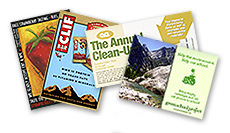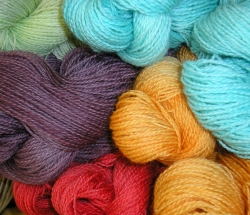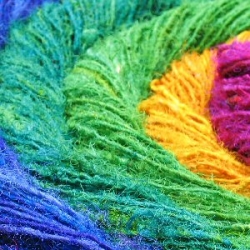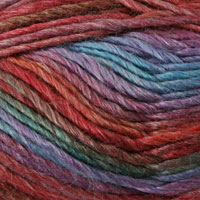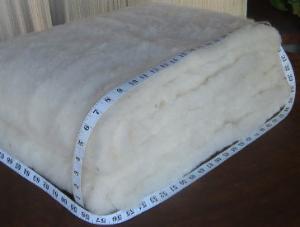 It is hard to talk about stuffing and not talk about batting. They are practically the same material, except the former is loose and used for pillows and plushes and the later is formed into flat layers perfect for quilting.
It is hard to talk about stuffing and not talk about batting. They are practically the same material, except the former is loose and used for pillows and plushes and the later is formed into flat layers perfect for quilting.
Like the world of plushes and softies, quilting is another craft that I have been keeping an eye on, but have yet to fully try out. The concept seems easy enough, but I’ve never been very patient and can’t quite get the whole measure twice, cut once, thing down. A friend of mine recently made me a quilt and I am in awe of the time and talent that she put into it.
Quilting is definitely on the move in the crafting world and quickly becoming the hip craft to do. The exploding popularity of Amy Butler and Denyse Schmidt have propelled this craft into the lime light and it is easy to see why.
If you delve into this craft you’ll need batting. Batting is used in the middle layer of quilts and is the bulk of the quilt. Depending on the type and thickness of the batting used, the softness and weight of the finished product will vary. Here are some greener options to try when tackling that first or tenth quilt:
- Cotton batting is lightweight and easy to work with for both hand and machine quilting. Choose organic cotton and like any other organic cotton option, you’ll help reduce the need for chemical pesticides used to grow conventional cotton. Organic cotton batting is available from a couple of sources, the most common being Heirloom. AIRTECH is another option that is 100% organic cotton.
- Wool batting is a favorite among quilters because of its soft feel and it provides warmth without being too heavy. Both myself and Skye have fallen in love with NearSea Naturals and amongst all of their eco-friendly products they offer a wool batting as well.
- Another fiber option for batting is alpaca. Just like wool, alpaca is warm and a wonderful renewable resource. Victoria has sung the praises of alpaca yarn but it is also a batting too.
Be careful when selecting natural fibers for your batting options. Some come with polyester scrims and can be poly-cotton blends. Look for 100% natural and organic batting and avoid bleached and dyed fibers. If you can get to know your supplier, just like at a farmers market, when you buy wool or alpaca, you’ll be able to ask questions about their process and their animals. They’ll be happy to share their process and you’ll be happy to know where your batt comes from.
Anyone ever try quilting with old blankets and sheets for batting? What about no batting?
[Image from NearSea Naturals website]


